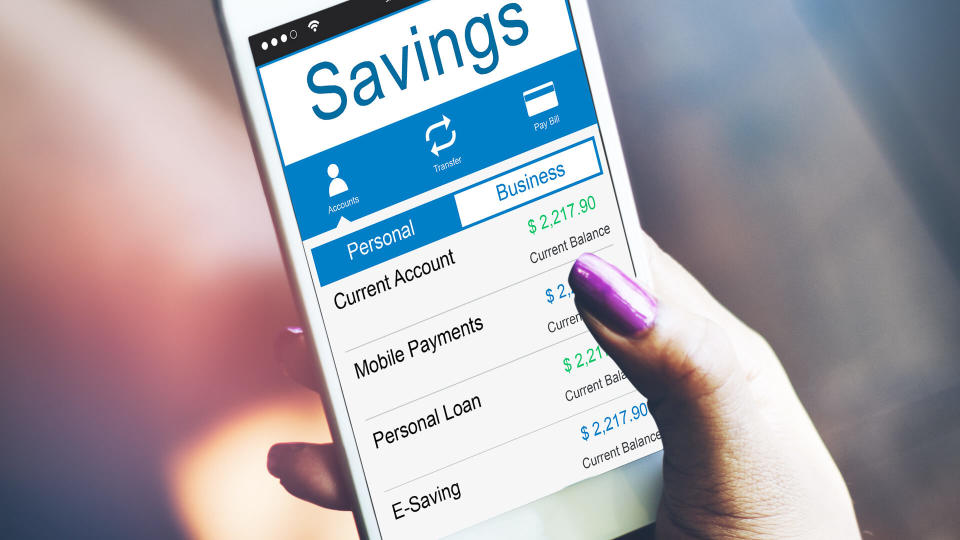What To Look For in a Savings Account

Most financial experts recommend keeping at least three to six months funds readily available in a savings account. But exactly what kind of savings account? Once upon a time (say, in 15th century Europe, where savings accounts were invented, according to Study.com), you didn’t have many choices. But today, you have options including traditional savings accounts, high-yield savings accounts and money market accounts.
What should you look for in a savings account? How do you know which one is “the one”? Or should you have more than one savings account? Let’s hear what financial experts have to say on the matter.
Also here is a breakdown of what a savings account is and how it can be a benefit to you.
Check Out: How Much Does the Average Middle-Class Person Have in Savings?
See More: 4 Genius Things All Wealthy People Do With Their Money
Seek the Highest Interest Rates Possible
The point of a savings account shouldn’t just be to keep your nest egg or emergency funds safely stored, it should also be to make that money grow. Look for a savings account that is offering high interest rates. You’ll find the best rates on high-yield savings accounts (HYSAs).
“While the national savings average is 0.58%, most online banks are paying more than 4%. And if you look carefully, you can find rates in excess of 5%,” said Gary Zimmerman, founder and CEO of MaxMyInterest.
“Many banks are paying an interest rate that’s less than the inflation rate, which means you’re actually losing real purchasing power every day. This is why it’s important to pay attention to where you’re keeping your money, to make sure that you’re not falling behind,” Zimmerman said.
“Your money should be working hard for you, protecting you against inflation,” he said. “Given the impact of compounding on returns, it’s important to make sure you’re always earning the highest yield possible while keeping your cash safe in FDIC-insured bank accounts.
Read Next: 6 Things the Middle Class Should Sell To Build Their Savings
Look for FDIC Insurance
Zimmerman explained the importance of having a bank account that is FDIC insured. Let’s touch on why that’s crucial.
The FDIC protects money (usually up to $250,000) you have in a bank. Should your bank fail (it happens), you’ll get your money back, so long as it’s under the cap, which is usually $250,000. Be sure to scour the fine print when signing up for a bank to ensure that they’re FDIC insured and up to what amount.
Increasingly, banks are getting FDIC insured. At the end of 2023, there were 4,470 FDIC-insured commercial banks in the U.S., up from 4,136 a year prior, according to Statista.
Look For Low or No Fees
You shouldn’t have to pay a fortune to house your fortune. Look for a savings account that has low or, better yet, no fees.
“Many savings accounts have maintenance fees, minimum balance requirements and other charges that eat away at your money,” said Erika Kullberg, attorney, personal finance expert and founder of Erika.com.
“Try to find accounts that have free banking options by keeping you above specific balance limits or automatically transferring money from your checking account into your savings account,” she said. “Making sure that your savings aren’t chipped away by fee after fee is a great way to enable them to grow.”
Look For Ease and Convenience
Remember, you want to be able to access your savings easily. Look for an account that offers convenience and ease of use.
“Think about whether you can easily access your money — at ATMs, online or on your mobile phone,” Kullberg said. “A bank that offers a user-friendly digital experience and an extensive network of ATMs can make managing your savings easier.”
“Look for other features too such as mobile check deposits and alerts that give you real-time information on your transactions,” she said.
Having More Than One Savings Account Could Be Smart
You do not need to have more than one savings account (unless you have more than $250,000, in which case you do, because that’s typically the max FDIC will insure), but it can be savvy to have a few even if you don’t have that much lying around.
“Banks’ needs for deposits change from time to time and so do their rates,” Zimmerman said. “As a result, you shouldn’t think about picking one savings account; you should have multiple savings accounts and move funds to whichever bank is offering the highest rate each month.”
More From GOBankingRates
These 10 Used Cars Will Last Longer Than an Average New Vehicle
6 Things to Try This Week if You're Behind on Your Savings Goals
4 Reasons Retired Women Need More Money Than Men -- And What To Do About it
This article originally appeared on GOBankingRates.com: What To Look For in a Savings Account

 Yahoo Finance
Yahoo Finance 